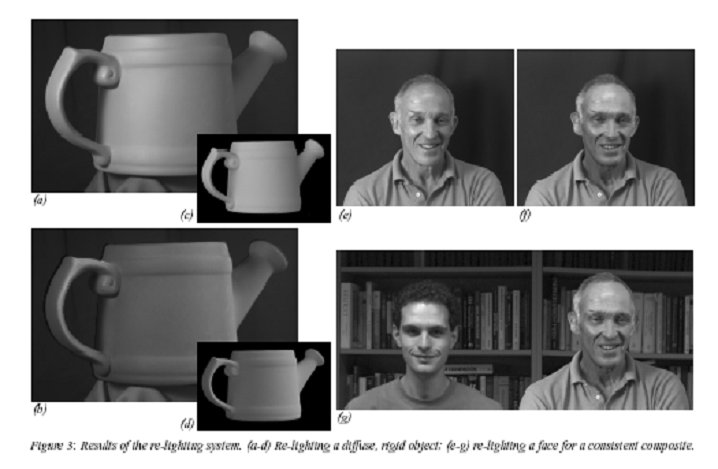|
|
[MG97]
Cornell University Program of Computer Graphics |
|
||||
Inverse lighting for photography.Stephen R. Marschner and Donald P. Greenberg.In Proceedings of the Fifth Color Imaging Conference, Society for Imaging Science and Technology, November 1997. We introduce a technique for improving photographs using inverse lighting, a new process based on algorithms developed in computer graphics for computing the reflection of light in 3D space. From a photograph and a 3D surface model for the object pictured, inverse lighting estimates the directional distribution of the incident light. We then use this information to process the photograph digitally to alter the lighting on the object. Inverse lighting is a specific example of the general idea of inverse rendering. This refers to the practice of using the methods of computer graphics, which normally are used to render images from scene information, to infer scene information from images. Our system uses physically based rendering technology to construct a linear least squares system that we solve to find the lighting. As an application, the results are then used to simulate a change in the incident light in the photograph. An implementation is described that uses 3D models from a laser range scanner and photographs from a high-resolution color CCD camera. We demonstrate the system on a simple test object and a human face.
This paper is available as a PDF file MG97.pdf (239K).
| ||||||
| ||||||
